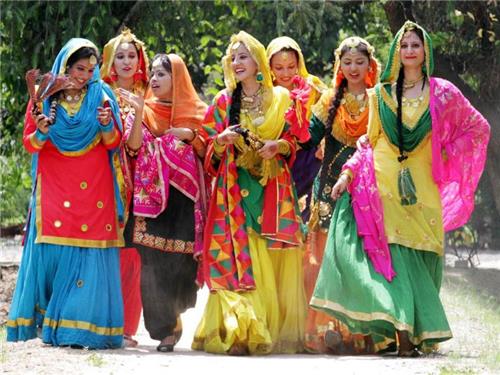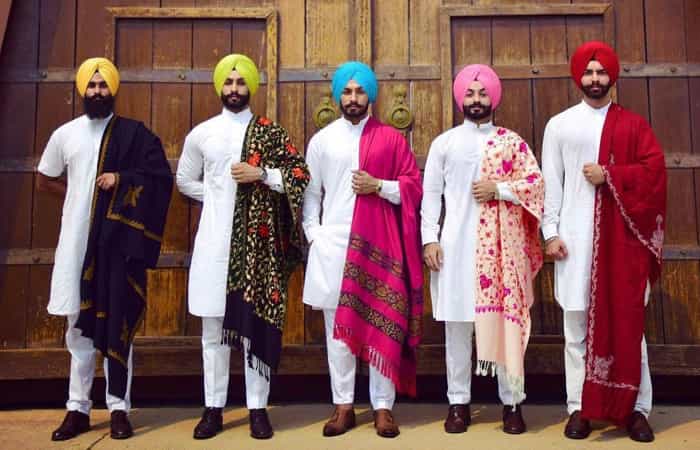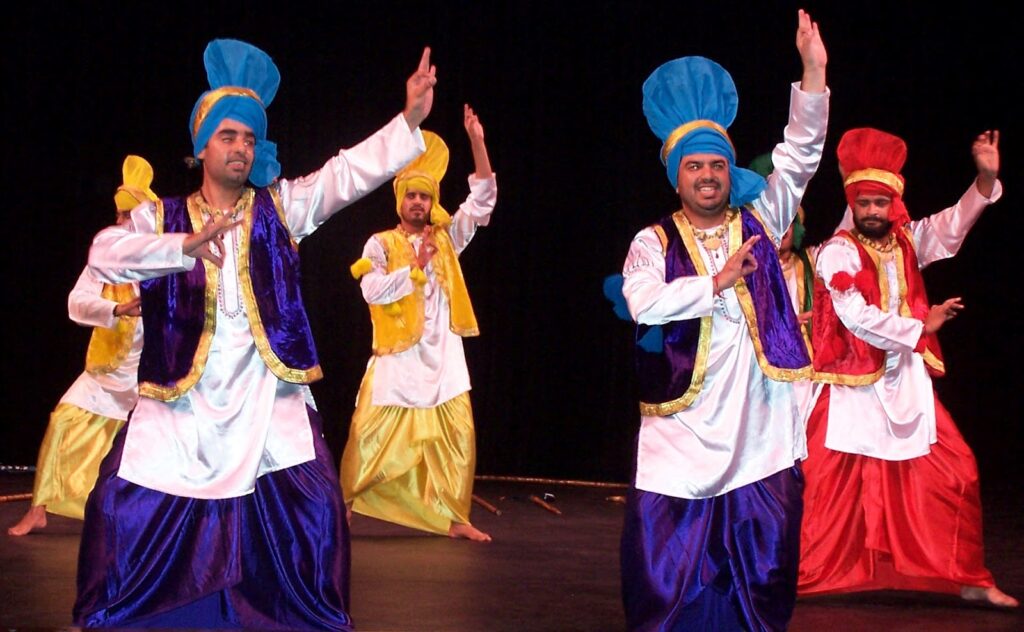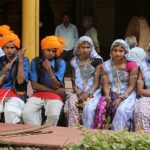Punjab, a vibrant state in northern India, is renowned for its rich cultural heritage, which is vividly expressed through its traditional dress. The traditional dress of Punjab is a reflection of its diverse culture and spirited people. Both men and women in Punjab have distinct traditional garments that not only represent their cultural identity but also add to the region’s vibrant tapestry. Here’s an exploration of the traditional dress codes for men and women in Punjab.
Traditional Dress of Punjabi Women

Punjabi Ghagra
The Punjabi Ghagra is a traditional attire consisting of four pieces: a kurta, a long-flared skirt called Ghagra, a salwar or trouser, and a Pulkari head scarf. This colorful ensemble is often worn by women during performances of Giddha, a traditional Punjabi folk dance. The Ghagra represents the rich cultural heritage of Punjab and showcases the state’s traditional charm.
Patiala Salwar Suit
Named after the city of Patiala, this traditional outfit features baggy, pleated trousers paired with a short kurti and a phulkari dupatta. The Patiala Salwar Suit is renowned for its comfort and airiness, making it a popular choice among Punjabi women. Historically, it was a part of the royal attire, symbolizing both grace and tradition.
Churidar Suit
The Churidar Suit consists of a tunic or kameez and tight-fitting trousers that hug the legs, creating a sleek silhouette. Made from sussi cotton, churidars come in various colors and are also known as full-length Ghuttana. This attire is appreciated for its elegant fit and traditional appeal.
Phulkari Suit/Jacket
Phulkari, meaning “flower crafting,” is a traditional embroidery technique used to create vibrant jackets. These jackets, adorned with colorful threads, are a testament to Punjab’s rich cultural artistry. Worn during festivals and special occasions, Phulkari jackets add a festive touch to any outfit.
Parandi
A Parandi is a decorative cluster of silk threads, often in bright colors, used to embellish long hair. There are several types of Parandi, including Jalebi, Moti, Laddoo, and Jail Parandi. These beautiful accessories are adorned with zari, mirrors, small metallic balls, and pearls, and are wrapped with a golden ribbon called “Gota” to enhance their charm. The Parandi signifies beauty and tradition.
Traditional Dress of Men in Punjab

Tehmat
Tehmat is a traditional dhoti or lungi with a glossy texture and zari border. Typically paired with a short kurta or shirt, Tehmat is worn with unique front folds. It is commonly worn during special occasions or while performing Bhangra, a lively folk dance of Punjab.
Jama
The Jama is a traditional gown worn by Punjabi men since the Mughal era. Known as “Jora jama,” this attire was traditionally given by the maternal uncle to the groom. It is complemented by a shawl called jamawar and a majestic turban, adding a regal touch to the outfit.
Kurta Pyjama
The Kurta Pyjama is a simple yet iconic Punjabi outfit. The kurta is a long garment that reaches the knees, while the pyjama is a loose-fitting pant with a drawstring. This classic combination represents the everyday traditional wear of Punjabi men.
Pagadi (Turban)
The Pagadi, or turban, is a significant piece of traditional headgear for Punjabi men. Made of cotton and tied using a specialized technique, it is a symbol of honor and respect. Sikh turbans, known as ‘dastar,’ are tied during a ceremony called Dastar/ Pagdi bandhi rite, marking a young Sikh boy’s transition into adulthood.
Jutti (Traditional Shoes)
Punjabi Jutti, crafted from leather with intricate gold or silver thread work, has been a royal accessory for over 400 years. One notable feature of Juttis is their lack of distinction between right and left sides, allowing them to be worn on either foot. Both men and women can enjoy this traditional footwear.
Conclusion
The traditional dress of Punjab represents a beautiful blend of comfort, elegance, and vibrant colors. Each garment, from the iconic pagri to the intricate jutti, encapsulates the essence of Punjab’s cultural heritage. Even as modern influences shape contemporary fashion, these traditional outfits remain a significant part of Punjab’s identity, celebrating the state’s rich history and enduring traditions.


